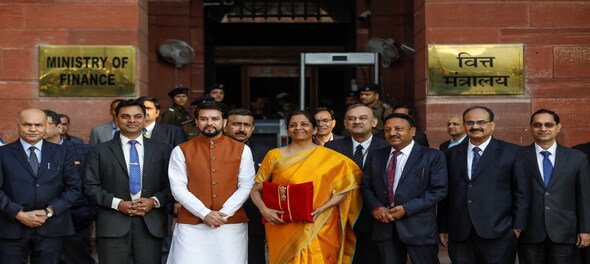
The finance minister read out the longest-ever budget speech. By the end of it she was too exhausted to even complete the speech. This pretty much explains the state of affairs.
Like a caged canary aspiring to fly in the blue sky, the finance minister very enthusiastically read out the vision for new modern India. However, after two hours of aspirational efforts, it was clear that she does not have enough strength to break the shackles and release herself. In the end, she was settled in the cage, totally exhausted and her wings ruffled.
The positive takeaway from the budget statement is that the aspirations are really high and the vision of new modern India is very clear. The government for the first time made an unambiguous admission that the way forward is a progressive socio-economic structure that is egalitarian but encourages and supports private enterprise. It is a major achievement to officially abandon the socialist legacy that focused on curbing demand rather than enhancing supply and hindered the seamless integration of the Indian economy in the global economy.
Positive takeaways
The following thoughts in budget speech indicate that some significant structural reforms could be implemented in the next few years. These reforms with stabilisation of the already implemented changes like GST, IBC and simplified corporate tax structure could help in propelling the growth to the desired level:
Negative takeaways
The incongruence between the intent (Part 1) and action (Part 2) is the key negative in the budget. For example, consider the following:
Overall ranking — 6/10
I would rate the budget 6 on a scale of 10 for one simple reason, viz., it is for the first time that the government has officially recognised the need to move away from the socialist charter adopted in 1950-1980 era. It has shown willingness to adopt successful global practices in the socio-economic matters.
However, implementing the agenda would be a challenge because it will require much wider political consensus and far greater resource mobilisation. The track record of the incumbent government on both these fronts so far has been quite poor.
Vijay Kumar Gaba explores the treasure you know as India, and shares his experiences and observations about social, economic and cultural events and conditions. He contributes his pennies to the society as Director, Equal India Foundation. The views are personal.
Read his columns here.
First Published: Feb 1, 2020 5:39 PM IST
Check out our in-depth Market Coverage, Business News & get real-time Stock Market Updates on CNBC-TV18. Also, Watch our channels CNBC-TV18, CNBC Awaaz and CNBC Bajar Live on-the-go!


BJP replaces Poonam Mahajan with lawyer Ujjwal Nikam for Mumbai North Central Lok Sabha seat
Apr 27, 2024 7:53 PM
Meet Amritpal Singh, the separatist leader contesting Lok Sabha polls from Punjab's Khadoor Sahib
Apr 27, 2024 7:18 PM

